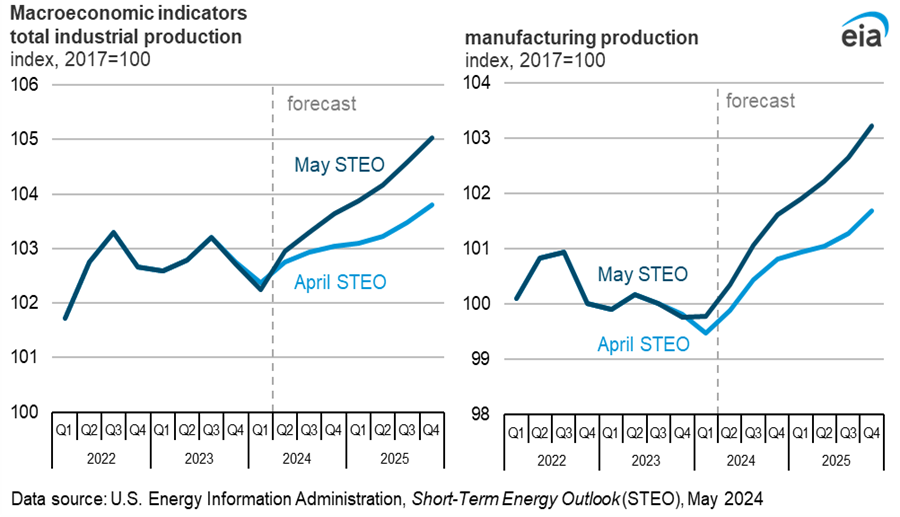Economy, weather, and CO2
U.S. macroeconomics
This month’s forecast assumes that real GDP will grow at an annualized rate of 2.0% in 2025 and 2.2% in 2026, revisions of 0.1 and -0.2 percentage points, respectively, from last month.
The macroeconomic assumptions in the Short-Term Energy Outlook are based on S&P Global’s macroeconomic model. We incorporate STEO energy price forecasts into the model to obtain the final macroeconomic assumptions.
The U.S. Bureau of Economic Analysis’s (BEA) Third Estimate of 2Q25 GDP, released on September 25, showed that GDP grew at an annualized rate of 3.8% in the second quarter of 2025 (2Q25), 0.5 percentage points above the Second Estimate. The upward revision was mostly due to faster consumer spending growth in 2Q25, which was revised higher from 1.6% to 2.5%. Changes to the GDP and consumer spending forecast directly affect EIA’s forecast for electricity consumption, natural gas consumption in the commercial and industrial sector, and distillate product supplied. Energy is an input to production, so faster GDP growth implies more energy consumption, in general.
In addition to the revision of 2Q25 GDP growth, BEA released its 2025 annual update, which included revised estimates of GDP and expenditure subcategories. Much of the difference between the macroeconomic assumptions in the November and October STEO reflects the cumulative effects of the 2Q25 GDP growth estimate and the annual revision, which covers 1Q20 to 1Q25.
Emissions
We forecast U.S. energy-related carbon dioxide (CO2) emissions to increase by 1.8% in 2025, followed by a decrease of 0.7% in 2026. CO2 emissions from coal, natural gas, and petroleum products all rise in 2025. Decreases in 2026 occur mostly from coal, with smaller decreases from petroleum products, which offset emissions increases from natural gas. The largest changes in emissions for both years are attributable to shifting coal consumption for power generation.
Weather
Based on our current forecasts and data from the National Oceanic and Atmospheric Administration, our forecast assumes the United States will experience a cooler November this year compared with last. We expect the cooler start to the 2024–2025 winter heating season (November—March) will be offset by a relatively mild 1Q26, with 7% fewer HDDs in 1Q26 compared with 1Q25, resulting in a slightly milder winter than both the previous winter (3% fewer HDDs) and the previous 10-year winter average (2% fewer HDDs).


